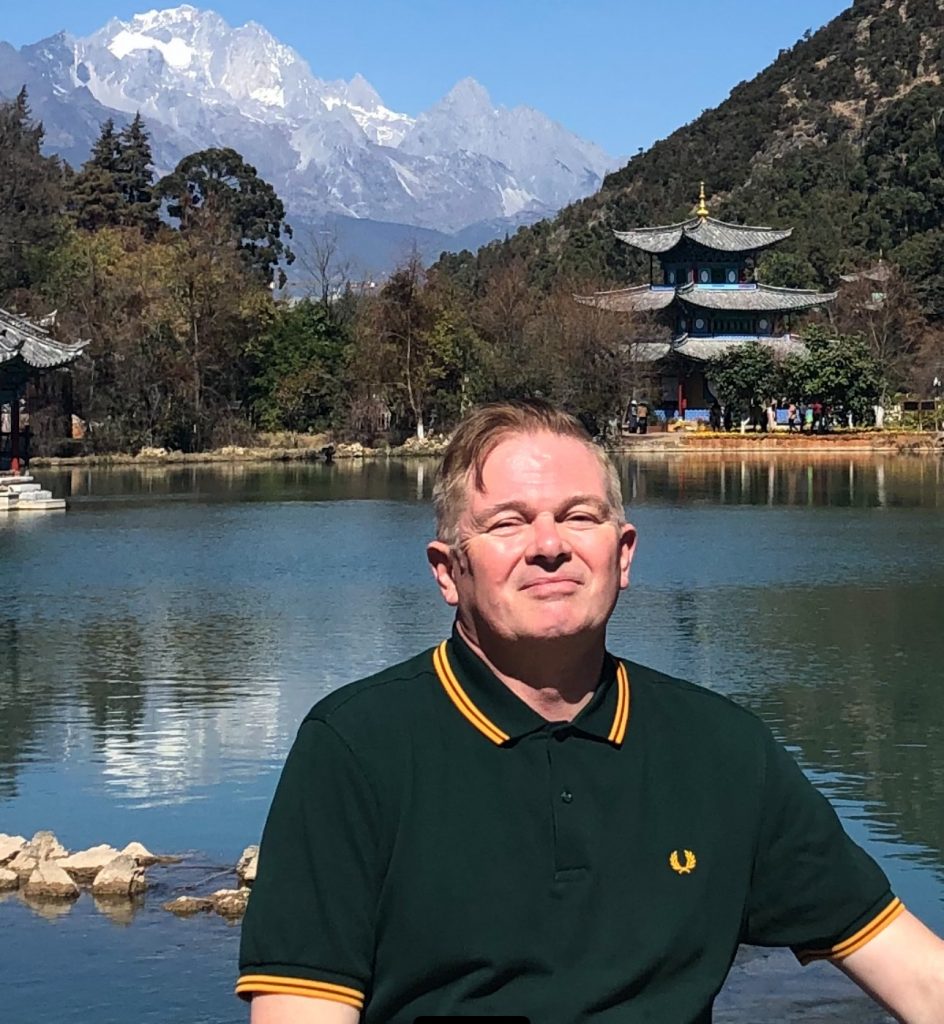
I have lived and worked in China since 2013, during which time I’ve led the start up and development of an innovative Chinese international school in Beijing. I spend ten months out of every twelve in China. I live in a district of Changping in north Beijing where I am the only foreigner. I work every day in the friendly company of my Chinese colleagues. In the UK I live in a southern town called Southbourne. Honestly, if it wasn’t for the approximate 5000 miles in between, I could walk down Bellevue Road in Southbourne and turn the corner into Beishahe Road in Changping, without batting an eyelid. China is my home.
The great bridge of friendship between Britain and China is education. I’m proud of the fact that every year over 90% of my students choose British universities for their further education. The cultures and traditions of learning and knowledge are long and venerable in both our histories. But I have to make a shameful and humbling admission. I was educated to the highest level in the UK, having had the privilege of studying at Cambridge University. But not once in my whole educational journey was China introduced so I, like so many British people, grew up almost entirely ignorant of the country, its people, its history and its culture.
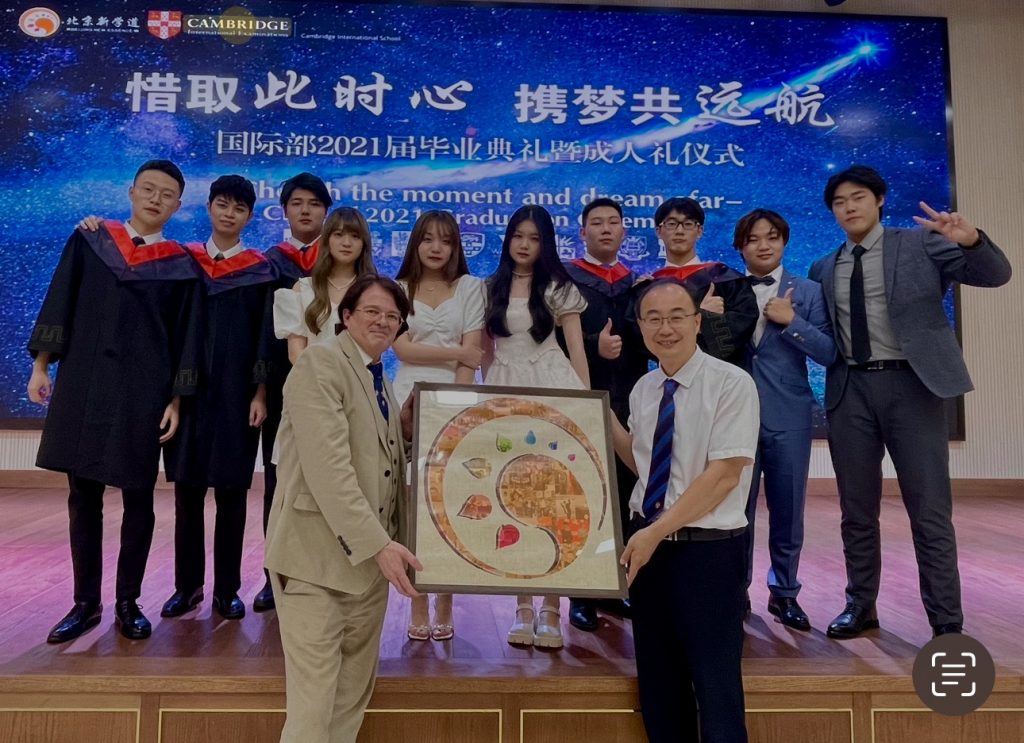
That’s why after ten years of immersing myself as deeply in China as I can, I’ve become Chair of a friendship organisation in Britain called the Society for Anglo Chinese Understanding, which was founded to build on the legacy of that great friend of China, Joseph Needham. Inspired by the traditions of abiding friendship between China and Britain I am determined to build as many bridges of understanding as I can.
As the famous British poet Elizabeth Barrett Browning wrote:
‘How do I love thee? Let me count the ways.’
Let’s start with my love of the amazing diversity of places I’ve been able to visit across this incredible country.
We start in Beijing, strolling through the tranquil winding maze of traditional alleyways called the ‘hutong’. Sit awhile to enjoy the garrulous 叽叽喳喳 – jījizhāzhā, the birdsong gossip of the old timers sitting out in the soft Beijing autumn sunshine, the distinctive tones of their 北京话 – Běijīnghuà – the Beijing dialect.

But now, let’s leave Beijing and jump on the dragon’s back – the amazing network of high spec, high tech, high speed trains which can whizz you at speeds in excess of 200 miles per hour the length and breadth of this land. Sit back and enjoy the service as delicious hot meals are delivered to your comfortable seat and the cinematic panorama of a nation opens up outside of your window.
First stop on our journey to the incredible – the Mogao Caves in far flung Dunhuang in Gansu Province. Shake the sand from your shoes and the darkness from your eyes and blink in the presence of the beauty of Buddhist art from the Tang dynasty (618-907 CE). Immersed in the swirling colours and diversity of faces you journey back to a time when this very place was one of the great crossroads of world trade and culture. Here in this cave complex where you stand they found the world’s oldest printed book – a text of the Buddhist Diamond Sutra produced in 868 CE.
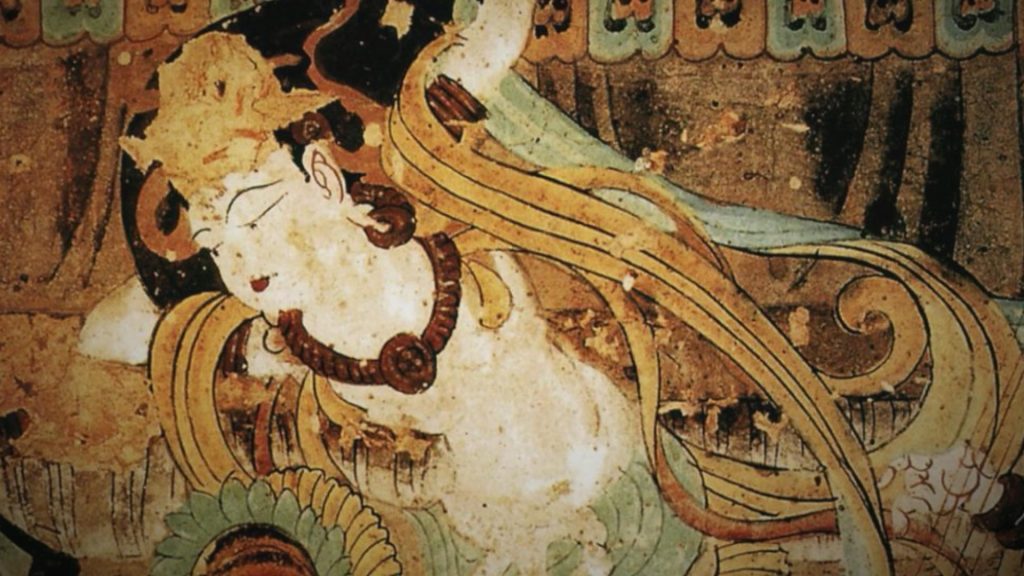
Mogao caves in Dunhuang 敦煌, Gansu
Hurry, back on board, we’re heading south and east down through the mountains into Sichuan and the ancient city of Chengdu. Using an app just developed in China we can call up a restaurant in the town of Lanzhou and have a delicious fragrant bowl of local 拉面 – lāmiàn, hand pulled noodles, delivered freshly to our train. And now here we are in Chengdu, with its all year round balmy climate and we’re following in the footsteps of one of China and the world’s greatest poets, Du Fu, who enjoyed some of the best years of his harsh life of exile in this city and wrote of it:
‘I’ve heard a lot about this city
Listen, there’s a sound
Of people making music.
That doesn’t cure
My loneliness.’
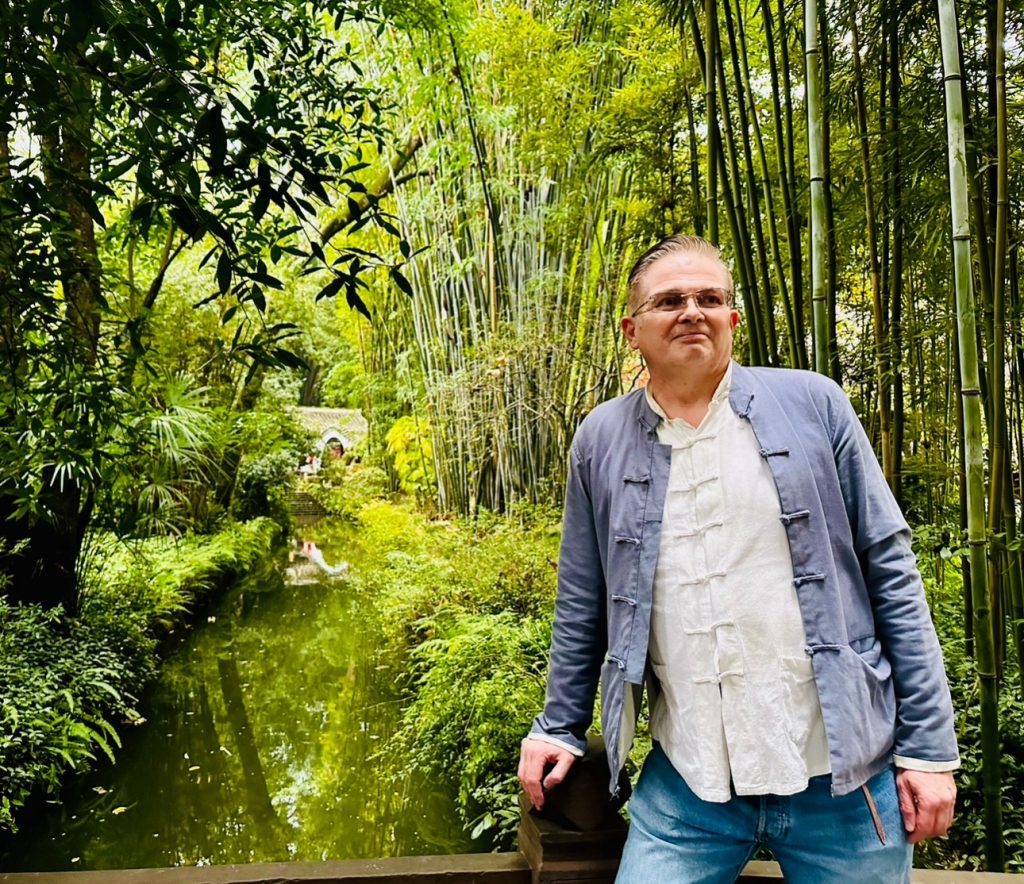
But there’s no time for loneliness for us. Just a short bus journey out of Chengdu and we’re at the site of Sanxingdui, staring deep into the profound and mysterious masked eyes of one of China’s, one of the world’s, most ancient civilisations, rapt in wonder at their sophisticated bronze artistry, works as intriguing and expressive as modern surrealism. And of course even a whistle stop tour of China could not be complete unless you joined the adoring throngs, wandering the beautifully landscaped panda sanctuary, peering among the swaying bamboo poles for the alluring, elusive patches of black and white, that are China’s gift to the natural iconography of the world.
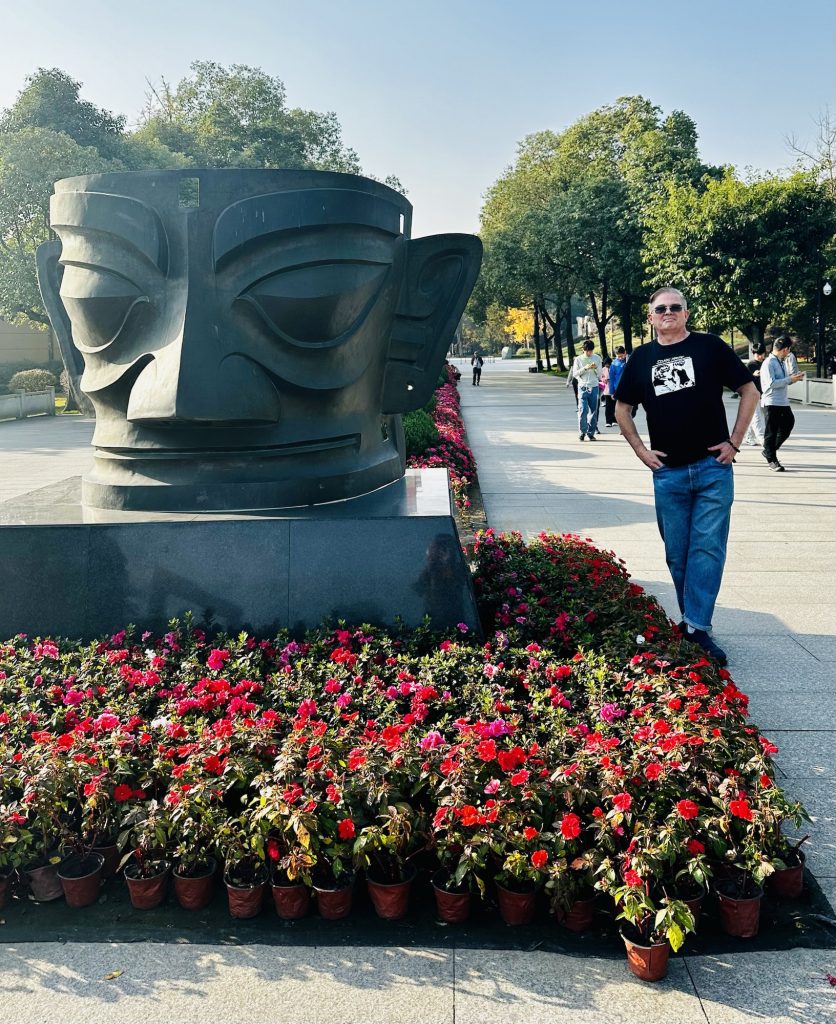
The high speed train welcomes us back and we’re off again, whizzing through the mountain passes, the deep ingenious tunnels threading under the mountains and flying over the elegant bridges that span the valleys, south to fabled Yunnan! In 2021 the COP 15 world bio-diversity conference took place in Kunming, the capital of Yunnan and with good reason. The eco-systems of Yunnan are critical to the environmental health of China and the whole planet. 18,000 different high plant species are found here, 1836 vertebrate species and 72.5% of China’s protected animal species. And here the great and largely unknown story of China’s great struggle to harmonise humanity and nature is unfolding.
In Yunnan we need to leave the high speed rail network behind and slow down to nature’s pace. Sit awhile by Black Dragon Pool in Lijiang and lose yourself in the sublime beauty of Jade Dragon Snow Mountain soaring nine miles distant in the low lying Yunnan clouds.
‘We sit together, the mountain and me
Till only the mountain remains.’
(Li Bai – Zazen on Ching T’ing Mountain, trans Sam Hammill, 2000)
Yunnan invites you to wander far from the beaten track, in your heart and your mind. Here we are now in wandering through the historic rows of tea bushes of Pu’er, the deep well of the world’s tea culture. Let’s take a seat in a tea-tasting room, heady with fermented fragrances. The afternoon sunlight dances through the window and refracts with earthly radiance through your glass tea bowl. This ignites the flavours of a history of tea cultivation and tea culture with roots in the tenth century when the local Blang and Dai ethnic minorities worked with the wisdom of the Tea Ancestor to develop this unique tea landscape. As you sip at the eco-system in a cup, the 茶艺师, the ‘chayi shi’ or ‘tea master’, a young lady from the Yunnan Wa or Va ethnic minority proudly tells me she is studying tea culture at the local ‘Tea University’, set up with government funding to preserve the knowledge and wisdom of Pu’er for future global generations.
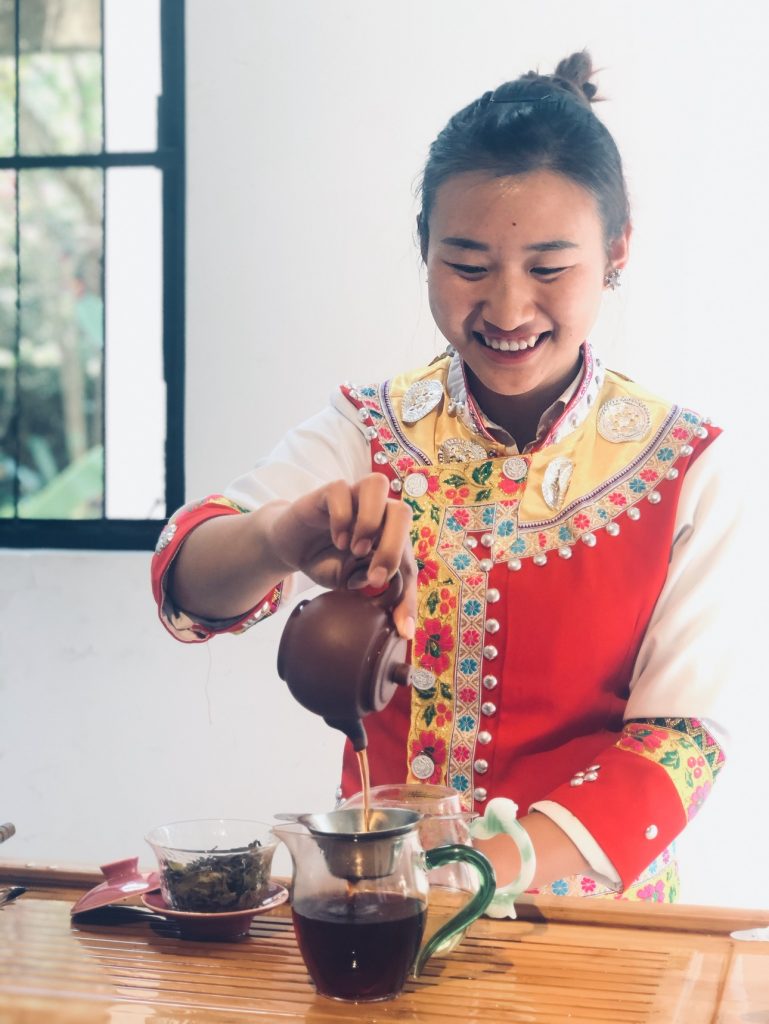
The high speed train from Kunming to Shanghai is waiting. There’s one more thing we must do – eat! We need some soul food! For me there is one simple dish that represents the 味道, the wèidao or flavour of Yunnan, 米线, mǐxiàn – rice noodles. You stood 2000 metres up on Aliao Mountain, about 300 kilomtres distant from Kunming and had your breath taken away by the myriad of rice terraces dug by the Hani ethnic minority on the mountain side, shimmering like dragon scales in the rising sun. Now steaming in front of you on a wobbly table in a street side restaurant, is a bowl of fragrant broth where the terrace rice swims in the form of long, white, strands of noodles. There are many local varieties of Yunnan rice noodles but perhaps ‘guò qiáo mǐ xiàn’ or ‘Cross the Bridge noodles’ are the most famous. There are slices of locally cured meats, glistening green fresh Yunnan vegetables, perhaps some delicate quail eggs, pickled vegetables and some ‘làjiāo’, chilli pickle sauce, to be added to your personal need for a spicy kick to your meal
Soon your taste buds are dancing to the harmony of natural, organic, earthy flavours. As you eat you slip into a little revery about the legendary origins of this dish. The story tells it was first created by a devoted wife for her struggling scholar husband, who studied hard every day, a bridge away from home and would eat nothing until his wife ‘crossed the bridge’ carrying this life-saving recipe. Inspired by her culinary art the scholar passed the imperial exam with flying colours and although he is long forgotten, his wife’s gift to the world lives on.
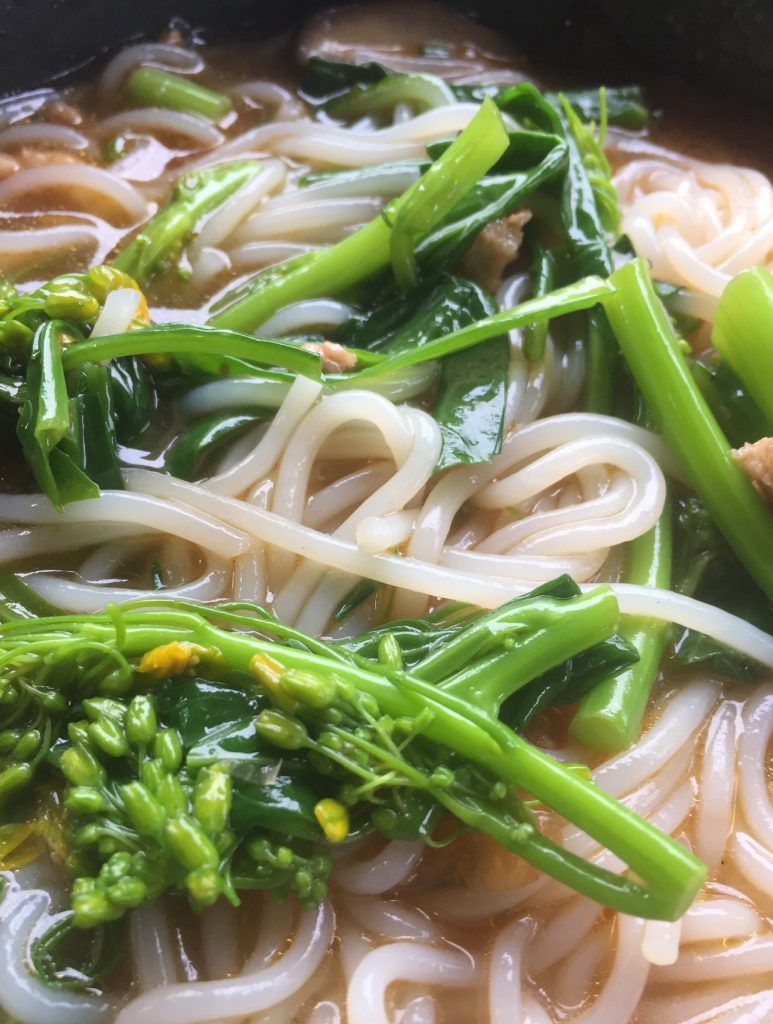
Yunnan, 米线, mǐxiàn – rice noodles
So we’re ready for the final leg of our travel embrace of China, the G1372, high speed train from Kunming South to Shanghai Hongqiao. As the kilometres slip by you remember all of the faces of the people, the other main ingredient of your love of China and its people. So many kind smiles and welcoming looks, in ten years not one glance of hostility or prejudice. So many hesitant, shy words of English to welcome you wherever you’ve been. Inevitably some faces stay longer in your memories than others. Let’s meet two of them.
His boyish face lit up in a warm smile, Along comes to meet you at the exit to Kaile Railway station, in Guizhou Province. For the next two weeks he’s offering you homestay in Langde village, a village of the Miao ethnic minority. His quiet charm makes you feel relaxed and at home right from the moment of meeting. 50 kilometres through the mountains later and he is guiding you up the stone steps, past the villagers offering you the traditional greeting of small but ferociously potent mǐjiǔ – rice wine. ‘Be careful’, he warns with a laugh. He guides you through the winding rough stone paths under the stone and wooden 吊脚楼 diàojiǎolóu houses, raising themselves along the mountainside on stilts.
At the house I’m introduced to Along’s mother and father, wizened by age but still spry and sprightly. We are sitting in the kitchen which has a roaring wood fuelled fire on top of which a pan of food is bubbling merrily. Feeling curious to taste a new dish, and feeling hungry, I shyly ask if I could try some. Along, mother and father all smile conspiratorially. ‘Why not?’ A bowl is produced and I’m given a ladle to spoon up a serving of piping hot delicious local cuisine. At the last minute Along’s mother mutters disapprovingly and gently but firmly stops me in mid motion. Along and his father fall silent. The mother guides me over to the dark corner of the kitchen and pulls up a trap door. Totally confused I peer down into the darkness below until out of the shadows comes the unmistakable snuffling of pigs and three large snouts are poked up towards me, sniffing greedily. Mother makes a sign that confirms what I’m now thinking – that this bubbling pan of food is for the porcine beauties kept under the stilted kitchen floor. There’s an awkward moment of silence, how will the foreigner react? And when I burst into waves of warm, good natured laughter they join in. Barriers of language and culture are dissolved and we pass the next two weeks as family, sharing both the joys and challenges of village life.
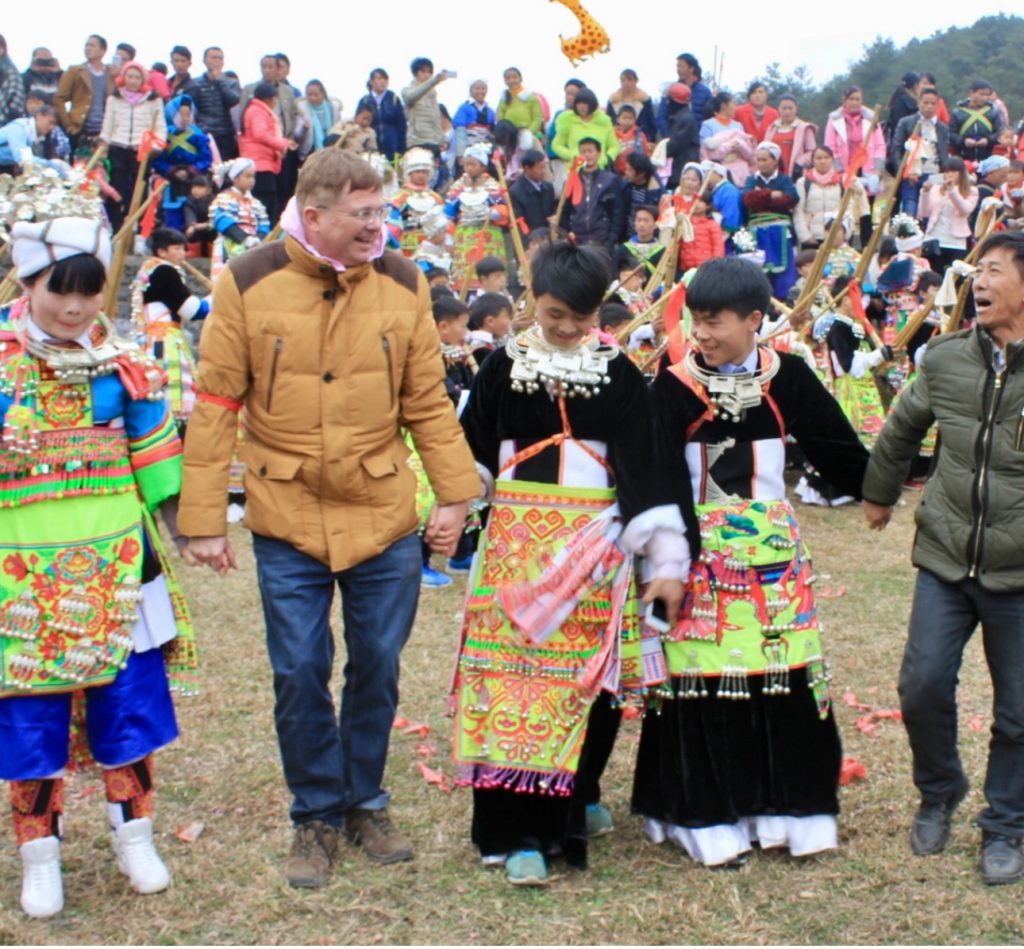
My second unforgettable encounter was in the far south-west Yunnan city of Tengchong, which is very close to the border with Myanmar. Come with me now to meet an authentic Chinese hero, Lu Caiwen. Lu is in his nineties, but as you sit in his living room, enchanted by his merry shining eyes it’s impossible to believe this is his real age. Impossible that is, until he tells his life story. You see Lu Caiwen came of age in one of the most terrible periods of recent Chinese history, when the invading Japanese Imperial Army threatened to overrun the whole of China. It’s 1943 and the invasion has captured Tengchong and is attempting to drive north to take a grip over the whole country. Lu Caiwen tells how he was technically too young to join the Chinese Expeditionary Force but still did so and joined the heroic struggle to delay or halt the invaders. It’s at this point that Joseph Needham, now honoured by the Society for Anglo Chinese Understanding, enters the story. As a well known scientist he was sent to China by the British government to find out what resources the Chinese needed to continue their struggle and organise supply and delivery.
Moist tears cloud Lu Caiwen’s heroic eyes as he tells the story of the battle for Laifeng Mountain. where the Japanese were dug into defensive lines. Inch by murderous inch the CEF crawled up the mountainside to reclaim the strategic advantage. At the foot of the mountain is a 53,000 square metre cemetery where rest the 10,000 CEF soldiers who made the ultimate sacrifice. Even now, decades later, Lu’s voice shakes with emotion, as he remembers the comrades who fell around him. Every few days Lu Caiwen visits the graveyard to lay chrysanthemums in memory of his fallen comrades. Their incredible courage and dedication to the cause were a major turning point in the war. Thanks to them the back door route into China was closed.
We don’t give enough historical credit to the Chinese role in the defeat of Fascism. The Chinese denied Japan control of valuable resources. Chinese resistance meant that Japanese troops had to stay in China, which allowed American and Russian allies vital breathing space to focus on the defeat of Germany. History should remember Mr Lu and his comrades for their part in freeing the world from the plague of fascism.
But the bonds of friendship stretch far beyond this. Listening to Lu you remember that almost at exactly the same time he crawled his way up Laifeng Mountain under murderous fire from the enemy, 11,000 kilometres away in central Italy, my grandfather, Alfred Nash, was crawling up another mountain, called Monte Cassino, under equally withering gunfire from the German army. Monte Cassino was as pivotal in the war in western Europe as Laifeng was in the war in Asia. When I sat next to Mr Lu in his Tengchong home in 2019 I knew my grandfather was there in the room, listening as attentively as I was. They shared the same slightly mischievous twinkle in their eyes, maybe the light in the eyes of those who have looked on the brutality of war and know better than us, the precious everyday beauty of peace.
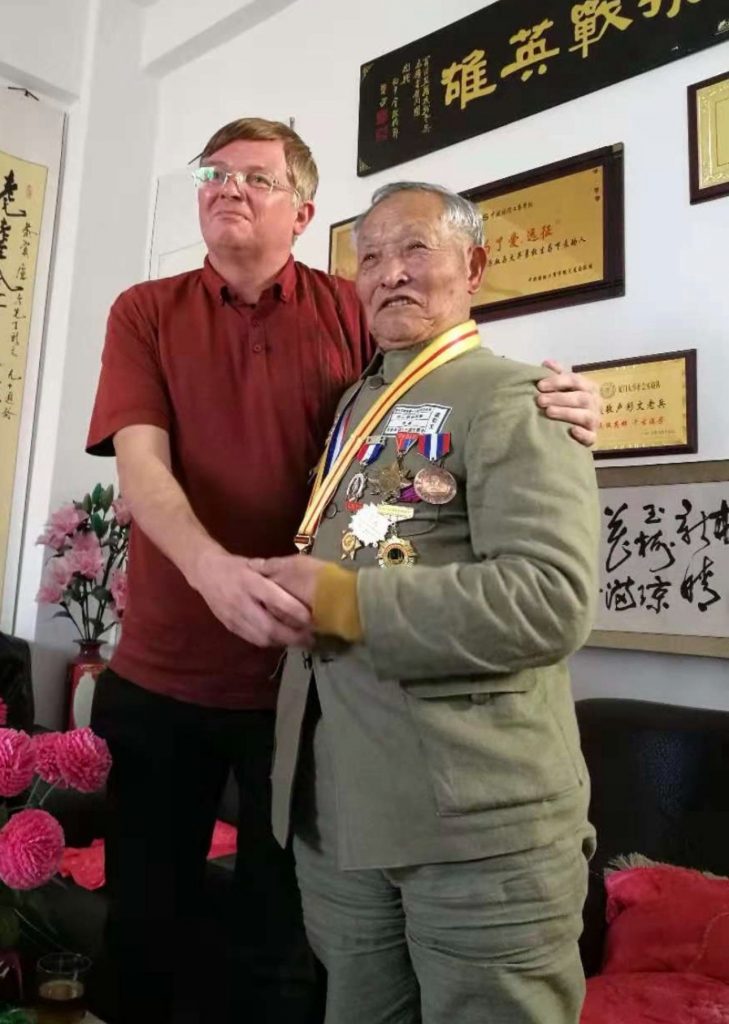
Look, it’s dusk outside and right on time the train is pulling into Shanghai Hongqiao station. We’ve completed our high speed embrace of a country and its people. We’ve arrived in the city where in July 1921 the rebirth of this great nation started. Gather round friends of China, new histories of understanding and harmony are waiting to be written.
